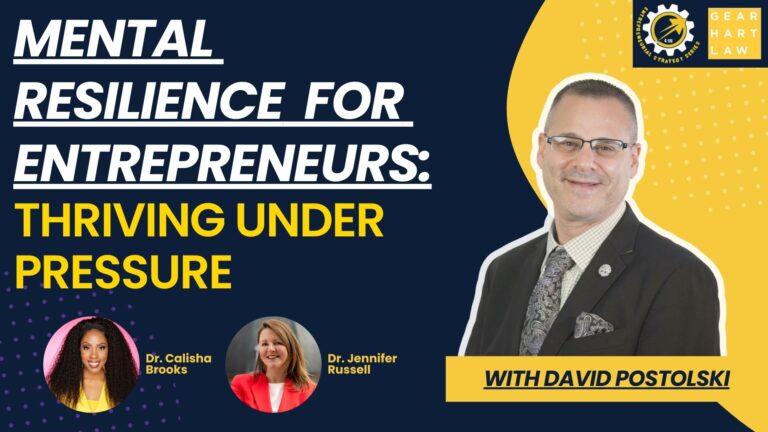
Mental Resilience for Entrepreneurs: Thriving Under Pressure
Entrepreneurship shouldn’t require sacrificing your sanity, your joy, or your life, right?
At our "Mental Resilience for Entrepreneurs" Entrepreneurial Strategy Series event on...
7 Areas for Patent Protection in the Food Industry
Innovation drives growth in the food industry, and patents often play a central role in protecting new ideas. From how a product tastes to how it’s packaged and delivered, patents can help secure competitive advantages. Understanding where patent protection may apply can give food companies, entrepreneurs, and investors a clearer picture of...
Challenges in Chemical Patenting
Patenting in the chemical industry is not as straightforward as it may seem. While a new compound, formula, or process might hold promise, meeting the strict requirements of the United States Patent and Trademark Office (USPTO) is a demanding process. Chemical patents must show not only novelty but also utility and...
4 Requirements When Filing a Trademark Registration
Registering a trademark can be one of the most effective ways to protect your brand. Whether you are launching a new product, building a business in New Jersey, or expanding nationally, the trademark registration process requires careful preparation. To give your application the best chance of approval, it’s important to understand...
What Types of Inventions Can Be Patented?
Coming up with a new invention is exciting, but one of the first questions you may ask is: Can my invention be patented? Not every idea qualifies for patent protection, yet U.S. patent law covers a wide variety of innovations across industries. From software to consumer products, patents play a...
Key Differences Between U.S. and European Patent Examination
Patent protection is vital for inventors and businesses that want to safeguard their innovations. While both the United States and Europe offer strong systems for obtaining patent rights, the examination process is not identical. Understanding how the U.S. Patent and Trademark Office (USPTO) and the European Patent Office (EPO) handle applications can...
The Trademark Examination and Registration Process
Applying for a trademark with the U.S. Patent and Trademark Office (USPTO) is an important step in protecting your brand. Whether you’re an individual inventor, a small business, or a larger company, understanding the trademark registration process helps you avoid delays and surprises. Below, we break down each stage of examination,...
The Role of Contracts in Business Deals
Every business deal, whether it’s with a partner, a supplier, or a new hire, depends on trust and clarity. A well-drafted contract puts that trust into writing. Contracts create the framework that makes business transactions reliable, enforceable, and less risky. They not only protect your company from disputes but also help build...

From Spark to Startup: Building a Business That Lasts
Gearhart Law is pleased to spotlight David Postolski’s vital role and expertise featured in the Financial Poise article, From Spark to Startup: Building a Business That Lasts. As a leading intellectual property attorney and trusted advisor to startups, David contributes decades of experience guiding entrepreneurs on how to protect what sets...
How to Monitor and Enforce Your Trademark Rights
Securing a registered trademark is an important step toward protecting your brand, but it’s not the end of the process. Trademark rights are only as strong as the effort you put into maintaining and defending them. If you don’t watch for misuse or take action when infringement occurs, you risk losing control...
